History of Spring Hill Farm
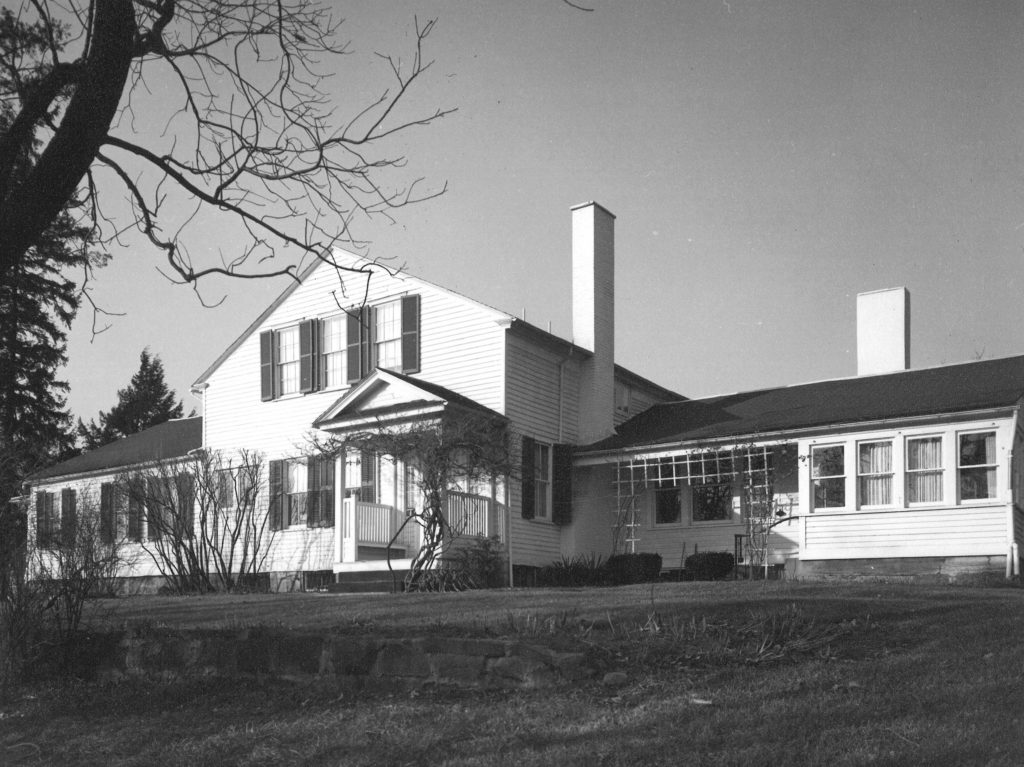
Spring Hill Farm was settled by Thomas and Charity Rotch (pronounced Roach), a Quaker couple from New England, in February of 1812. They had moved west to Ohio in November of 1811 upon the advice of Dr. Benjamin Rush of Philadelphia. After traveling to Ohio in May of 1811 and after a meeting with Bezaleel Wells, Thomas and Charity Rotch decided to move to the area. Thomas Rotch would purchase around 5,300 acres, and the couple would settle on the hill. Before their home, Spring Hill, was built in the early 1820s, Thomas and Charity lived in a log cabin on the farm on which they raised around 400 merino sheep with the help of their farmhand and friend, Arvine Wales.
On April 20th, 1812, Thomas Rotch founded a town called Kendal (current Northeast Massillon), named after the Medieval textile woolen center of Kendall, Cumbria, England. Click or tap here to learn more about Kendal. Thomas and Charity also opened up their their farm, Spring Hill, as a haven for freedom seekers on the Underground Railroad. Spring Hill has a letter called the George Duncan Letter, which you can read more about here.
After Thomas died in 1823 and Charity in 1824, the property was transferred to their heirs. In 1830, Arvine Wales, shepherd, and dear friend, purchased the Rotch home and 60 acres. Arvine Wales continued to raise Merino sheep, was involved in Kendal’s growth, and was part of the early days of Massillon’s founding in 1826. By the 1840s, Arvine Wales had written in many local agricultural journals about the woolen trade and the crops at Spring Hill. He even wrote a piece in 1850 regarding the growth and preservation of pumpkins in the Ohio Cultivator Magazine, a prestigious farming magazine of the day.
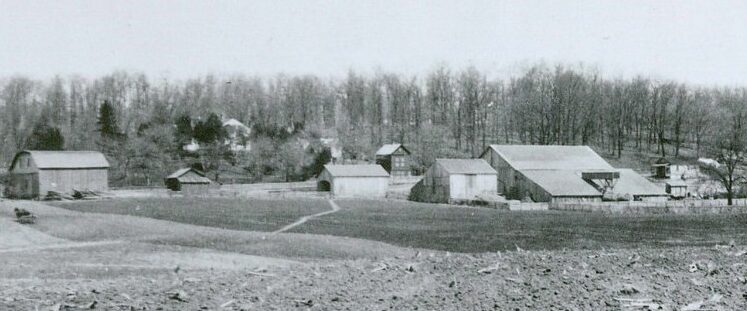
Spring Hill was passed down through the Wales family after Arvine died in 1854. His son, Arvine Chaffee Wales, would inherit the farm. Always tinkering, Arvine Chaffee established Spring Hill Dairy in 1878, switching the farm’s focus towards dairy. He still raised Merino Sheep, and grew the flock to over 2,000. He would manage the farm until his death in 1882.
Two of his sons, Arvine III and Horatio, operated Spring Hill after 1900. Arvine III married in 1900 and built a house on the upper hill, and the farmhouse was occupied by Arvine Chaffee’s youngest son, Horatio, and his wife, Irene McLain, in 1910.
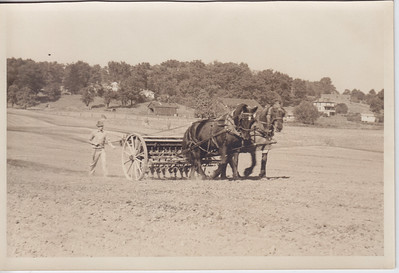
Under Horatio and Irene, Spring Hill focused on fowl, such as geese, ducks, and pheasants, while continuing to manage Spring Hill Dairy. By the 1940s, the flock of Merino sheep had dwindled to around 10 sheep.
The farm was still growing grains, and despite being a much smaller operation than before, there were still over 20 farmers working on the property. However, Horatio and Irene began to focus less on farming. Horatio Wales would die in 1952, and Irene McLain Wales would officially cease farming at Spring Hill in 1961.
In 1966, the Massillon Museum Foundation was formed to acquire the property. Spring Hill has been a historic home since Irene McLain Wales died in 1973 and continues Irene’s legacy of sharing our history with the community and the world.
More information
For more on the Rotch Family click here. For more on the Wales Family click here.
Collections & Archives
To view our archives, collections, and Historic Home photographs, click here.
Outbuildings
Carriage House/Garage
The current garage was built in 1920s and houses two carriages that belonged to local families. The previous carriage house had a room above it that often housed several hired farmhands.
Smokehouse
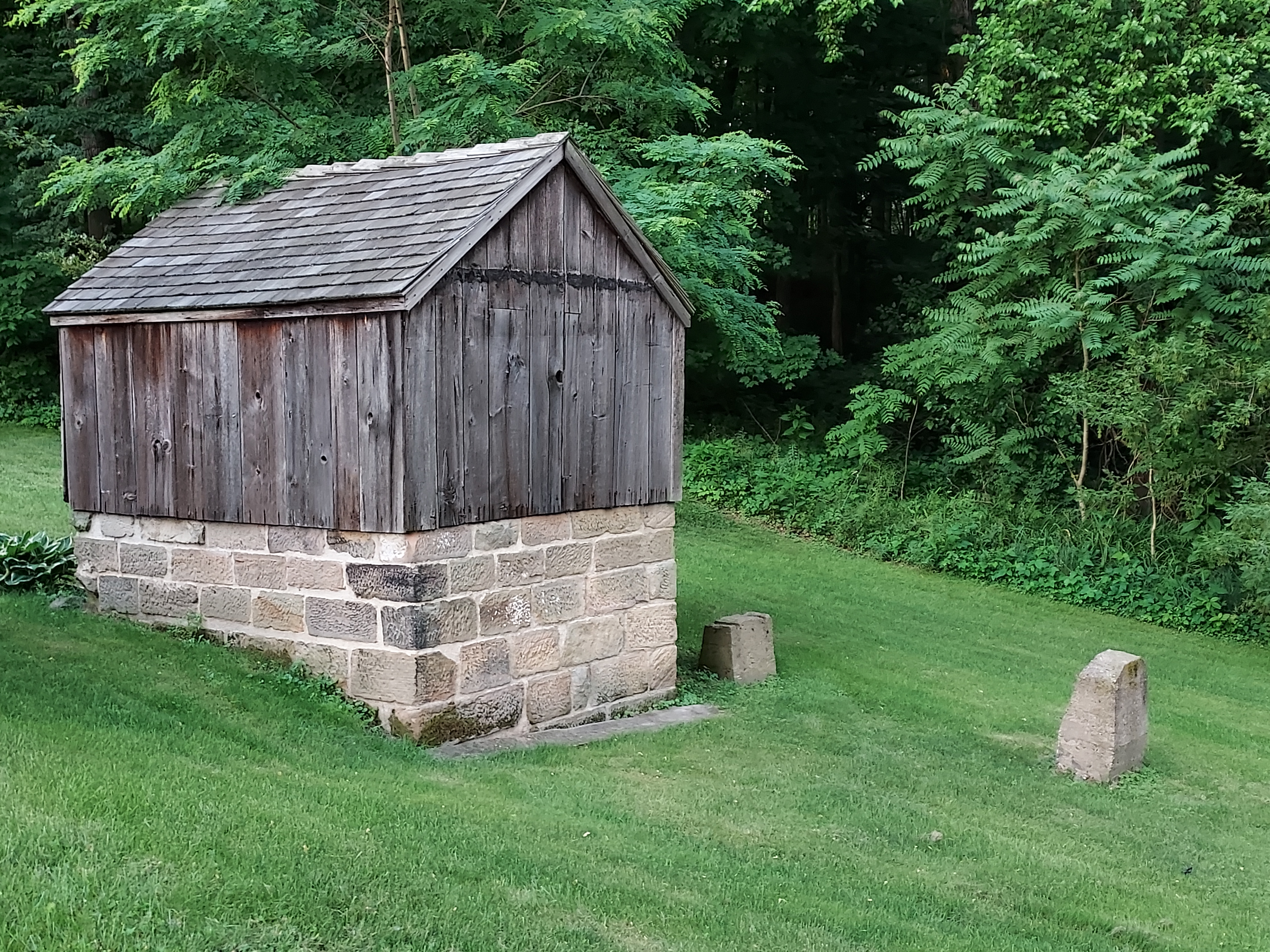
There is no documentation on the age of this structure, however the foundation stones are very similar to those used in the 1821 farmhouse’s construction. Smoking was a way of preserving meat prior to the advent of refrigeration. After the meat, mostly ham, was smoked in this structure, it was hung in the ham closet located off of the second story balcony of the farmhouse. It was likely stored here due to the risk of attracting wild animals.
For some time, the building also had a storage/tool shed attached to the back of the structure that is no longer present. The remaining structure has been excavated to find an original fire pit, which contained a large iron kettle. A smaller kettle was also discovered, likely used in later years when smoking smaller batches of meat.
Dog Kennel
The dog kennel is one of the more modern buildings constructed at Spring Hill Farm, commissioned by Horatio Wales (1880-1952) after he inherited the family farm in 1909. The structure was constructed with a dog run area in the back, and was moved to its current location in the 1930s from atop the northeast hill.
Horatio loved to hunt and had this kennel built with a couple of dog runs for his hunting dogs. He enjoyed hunting for ducks, foxes, and big game out West and also while in Ethiopia.
In 2009, Alex Myers restored the exterior of the kennel for his Eagle Scout project.
Spring House
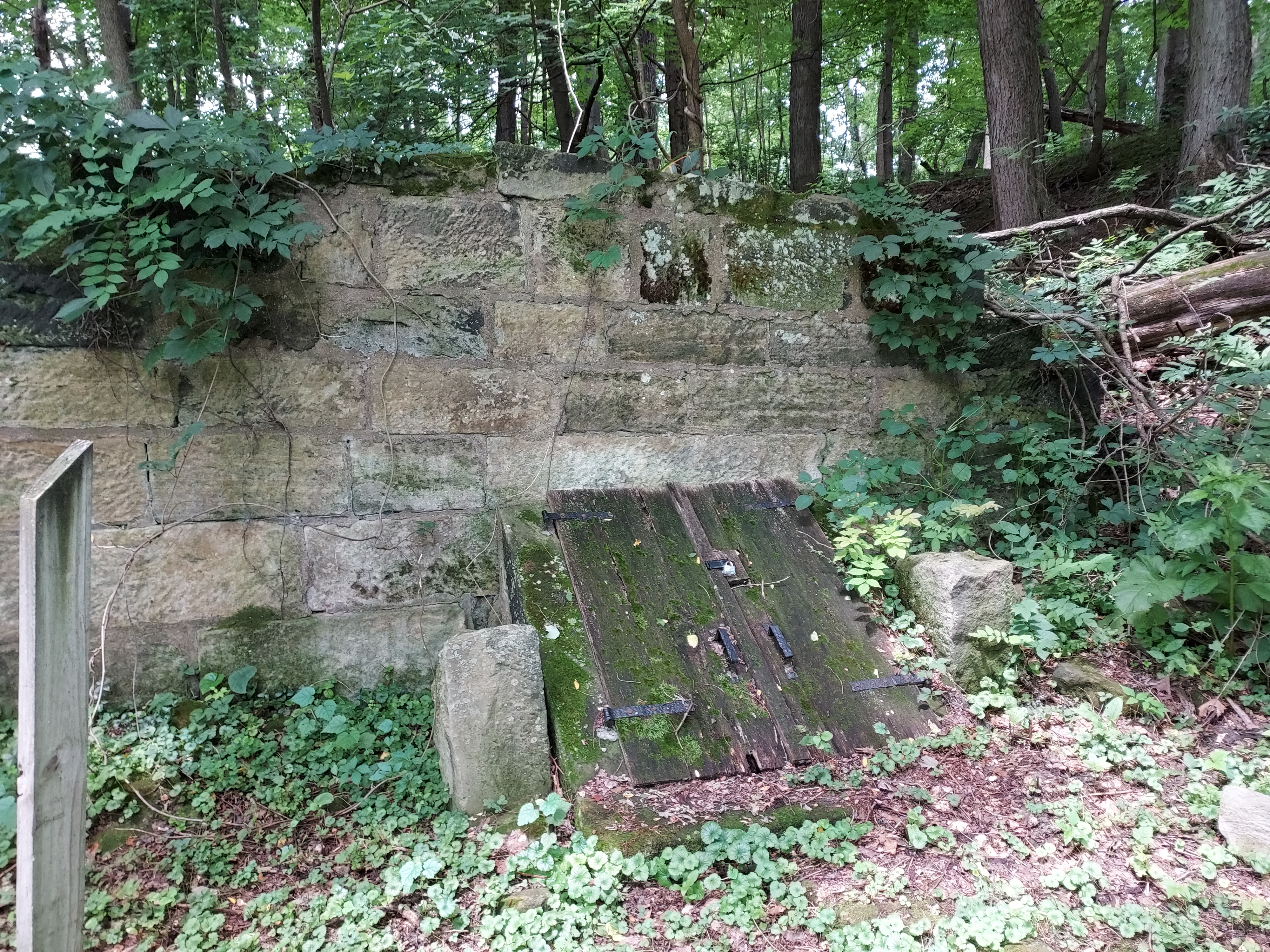
The Spring House is a structure that was likely created during the time Thomas and Charity Rotch occupied Spring Hill (1811-1824) due to the importance of the natural springs at that time period. Much of it has been lost over time; only the cellar entrance and part of the stone foundation remains today. The stone foundation is reminiscent of the foundations of both the farmhouse (ca. 1821) and Smoke House.
The Spring House would have been created to provide an underground access to the spring water, and would also be a place to store dairy products to keep them cool. While we aren’t sure what the full structure looked like, it is documented that there was a second-story storage area. The structure was later adapted to supply spring water via pipeline to other buildings on the property.
It is said through Wales family records that the Spring House was the first site of the Charity School of Kendal, established in 1829 and directed by Arvine Wales I, until a proper building was constructed in 1844 that stood along Bennington Avenue in northeast Massillon. It is also said that the Spring House was one location where runaway slaves, or freedom seekers, would be able to stow away for a day or two on the property in the early 19th century.
Milk House
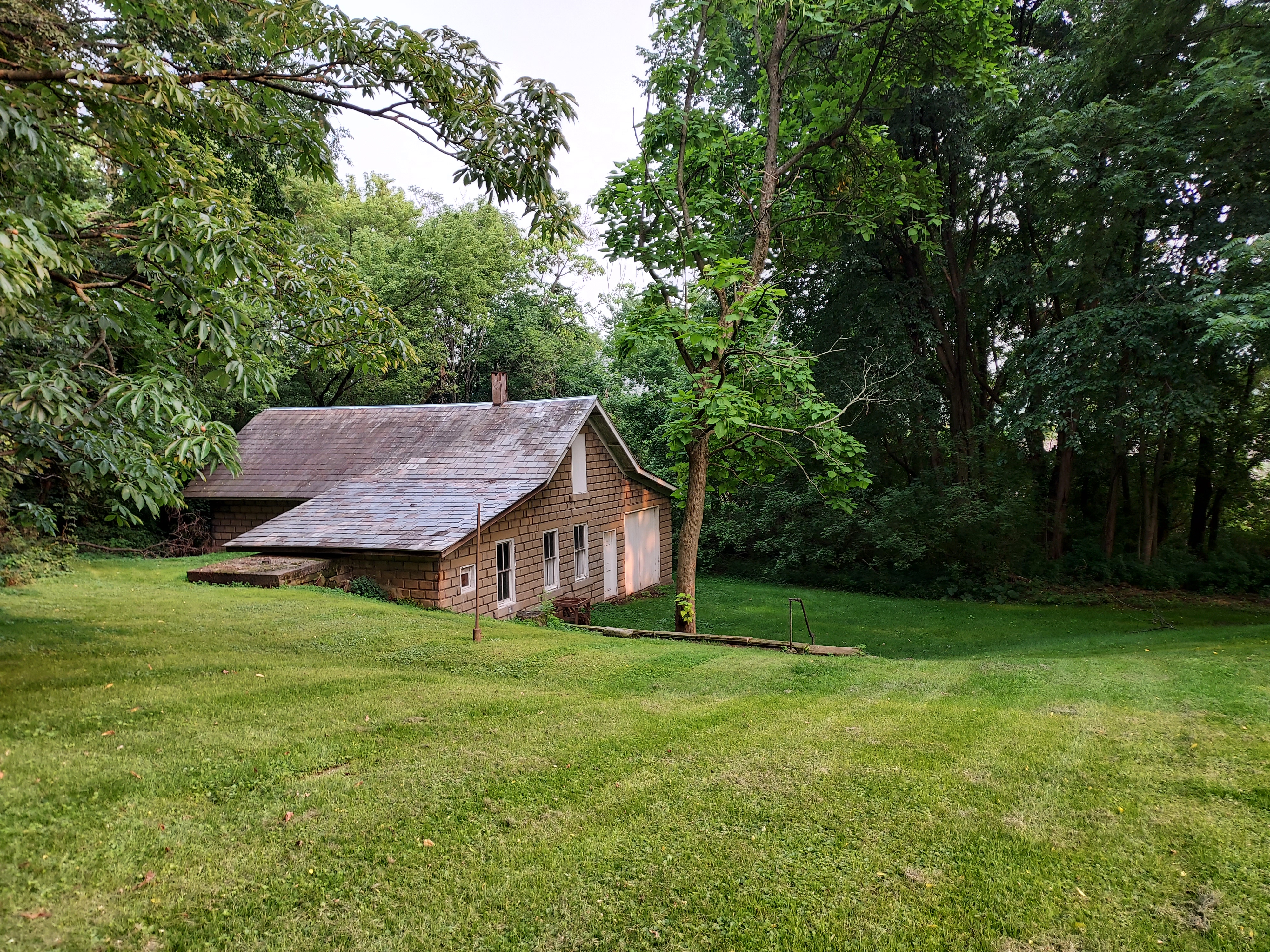
Spring Hill Farm transitioned from a focus on Merino sheep to dairy cows, becoming Spring Hill Dairy in 1878 under proprietor Arvine Chaffee Wales, who inherited the farm from his father, Arvine Wales in 1854.
The milk house was constructed in 1903 at the commission of Arvine Wales III, who helped to run the farm as a young man with his brother, Horatio Wales. The milk house was once an essential piece of the commercialized farm; it was used as a place to store milk and cream, kept cool by the natural spring water that was directed into a trough. The building was constructed of cut stone to act as an insulator to keep the interior at a cooler temperature.
As shown in the image above, the large garage door to the right of the building was a pull-through access, where horse-drawn carriages would ride through and be loaded up with dairy product to take to distribution centers.
Grain Barn
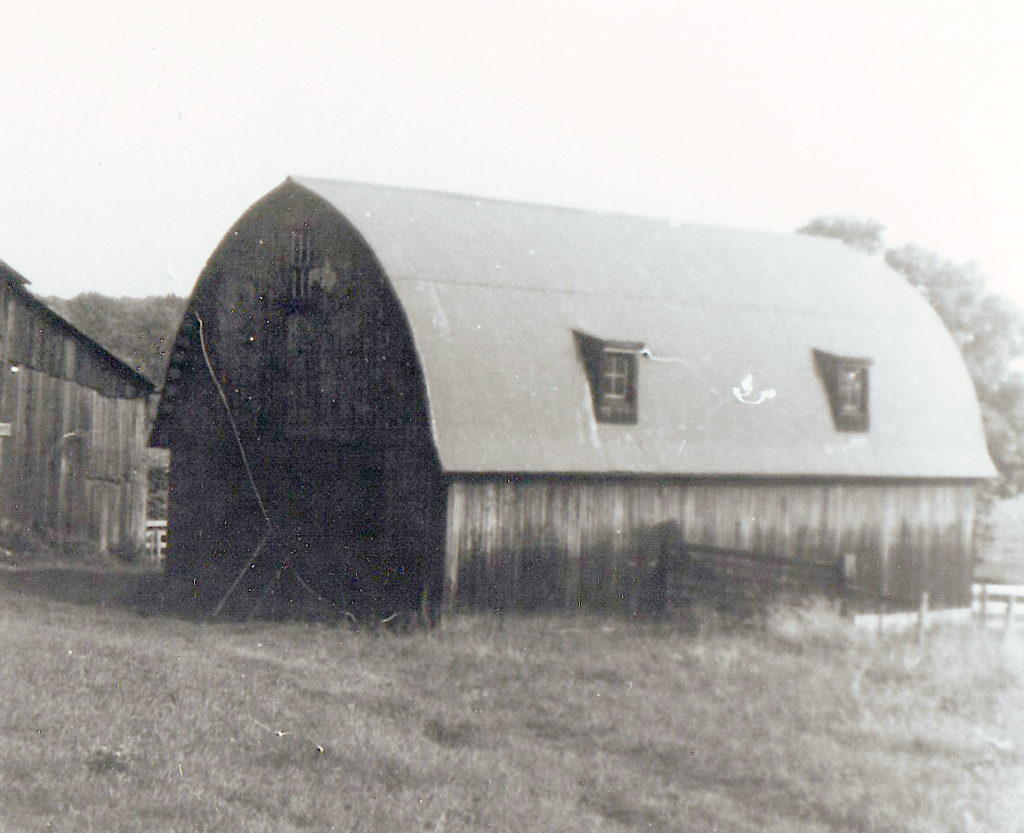
The granary barn was constructed in 1953 to replace its predecessor that stood facing the opposite east-west direction nearby. The farm’s primary owner at the time, Horatio Wales, had passed away just shortly before its construction. The farm continued to be operated by Horatio’s nephew, Robert McLain, and tenant farmers like the Fox family, who lived on the property until 1962.
The granary barn was used to store grains to feed the livestock: The interior includes a corn crib on either side for drying out the grain, and a second story grain loft that was emptied using a grain shoot. The architecture of the barn, with its rib Gothic arch and metal roof, was characteristic of barns from the early 1900s to 1950s due to its higher cubic storage capacity.
Wool house
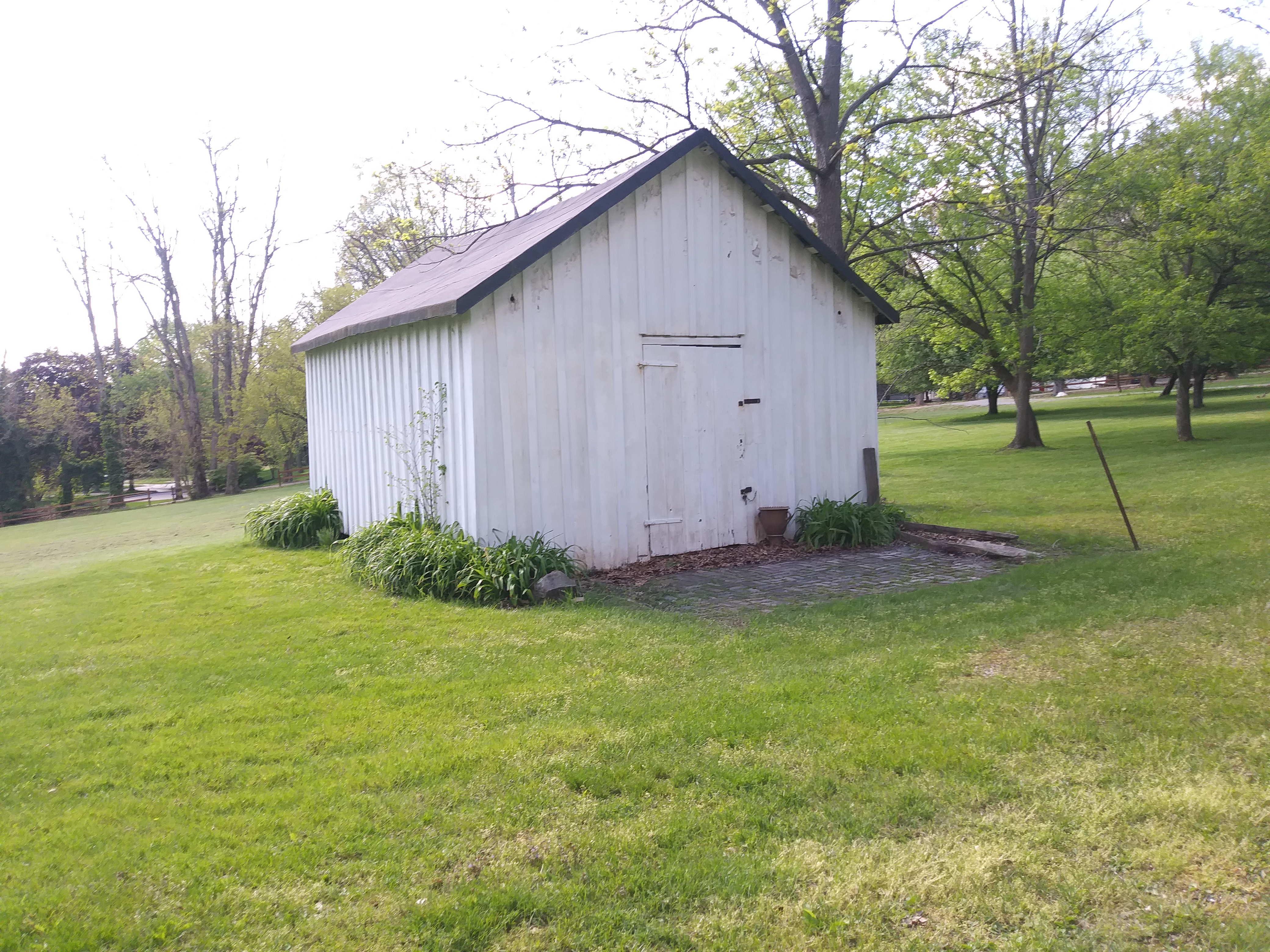
In the early 19th century, Spring Hill Farm focused on the breeding and raising of Merino sheep, brought to Stark County, Ohio in 1811 by Thomas (1767-1923) and Charity Rotch (1766-1824). Merino sheep are of Spanish origin, revered for their very fine, soft wool. While the age of the Wool House remains undocumented, it is likely that it was constructed during the time Thomas and Charity lived on the property, due to its purpose of storing wool. Wool would be stored after sheared until it could be transferred to Thomas’ woolen factory along Sippo Creek.
After the farm transitioned to dairy production in the 1870s, the Wool House stored other materials, like Wales family furniture and barrels of documents – which comprise the Rotch-Wales Papers of Spring Hill and the Massillon Public Library. It is speculated that Arvine Wales II (1827-1882) relocated these belongings from the house to the building. Irene McLain Wales (1886-1973), wife of property owner Horatio Wales (1880-1952), searched through these belongings in the 1930s and 1940s. What she discovered astonished her: Letters, diaries, certificates, receipts, and more from Horatio’s grandfather, Arvine Wales I, but also Thomas and Charity Rotch. Within these papers, Irene found letters that documented Spring Hill Farm as a station on the Underground Railroad in 1820.
House atop the hill
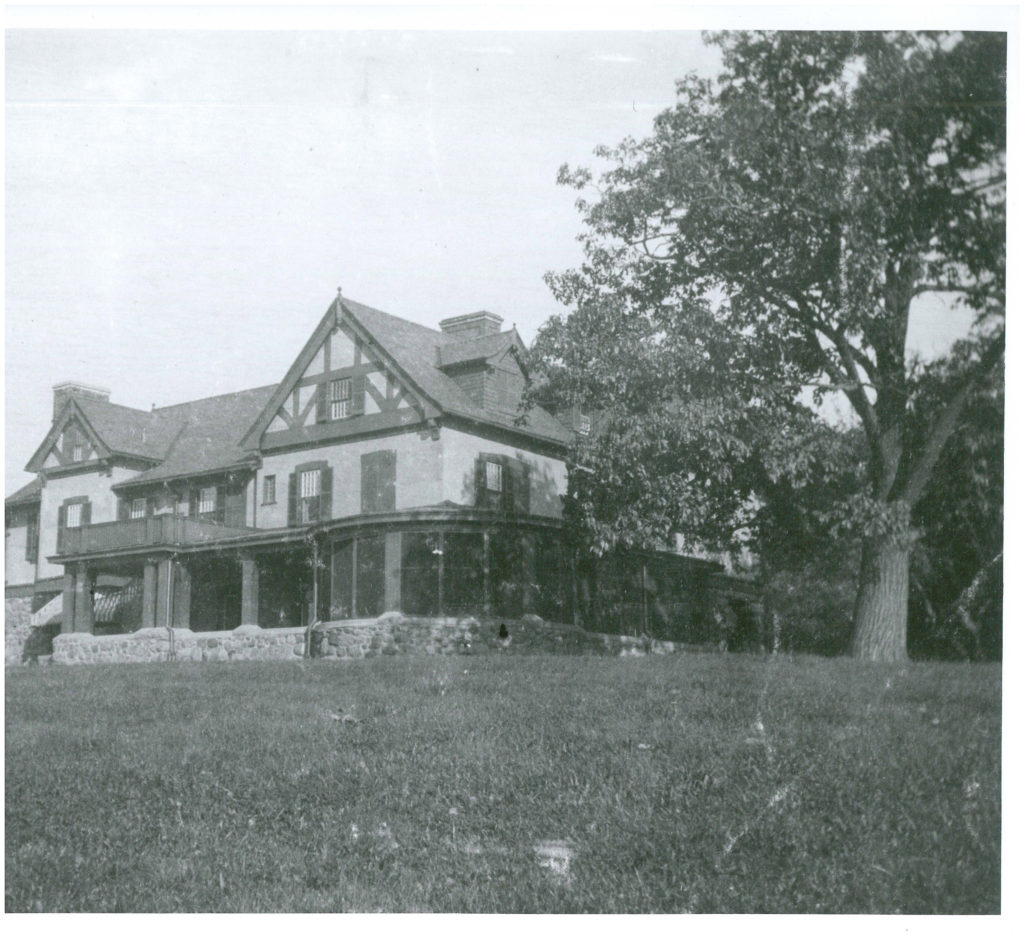
Initially, this was the site of Arvine III and Edna’s McClymonds Wales’ house. His mother, Eliza Wales, moved in with him and would rotate between his house and Helen Wales Skinner’s home in Europe (in France and Germany while Helen’s husband Robert Peet Skinner was US Consul General) until Eliza’s death in 1914.
The tower that some neighbors remember was a water storage tower. In 1923, that home burned to the ground. Irene Wales lost some of her silver she had stored there while on vacation. After the fire, Arvine III and his wife Edna moved to New York where their children were attending school. Their daughter, Elizabeth, built the current house.
Merino Sheep
Colonel David Humphreys served as minister to Spain from 1797-1802. During this time he became convinced that merino sheep would be of great benefit to the United States. He contracted for twenty-five rams and seventy-five ewes from one to two years old and these were shipped from Portugal April 10, 1802. In about fifty-one days, they landed at Derby Connecticut.
Thomas Rotch became interested in breeding merino sheep for their fine wool, and by 1811 had built up a flock of 400. When Thomas decided to leave Hartford, Connecticut, and make the move to Ohio, Arvine Wales left in September with six other men to drive the flock. The journey by foot took them two months. While crossing the mountains in Pennsylvania, , they had to improvise leather muzzles and hire three additional men to keep the sheep from eating poisonous mountain laurel. On the entire journey, they lost only about 10 sheep.
Thomas and Charity came west by carriage, leaving in October 1811, and met Arvine Wales at Steubenville in November. Half the flock was taken by Arvine to winter at Cross Creek near Steubenville, and Thomas and the other men proceeded to Sippo with the remainder of the flock. They built folds for the sheep and a small log cabin for themselves.
Thomas Rotch introduced merino sheep into Stark County, and did more to improve the breed than any other person. By the 1820s, this became the greatest merino sheep-raising district in the U.S. The wool was used in the Rotch woolen mill on the edge of Sippo Creek in the town of Kendal (the Woolen Mill still stands in Reservoir Park). Sheep were not raised in abundance at Spring Hill after 1880.
Thomas Rotch of Spring Hill Seal
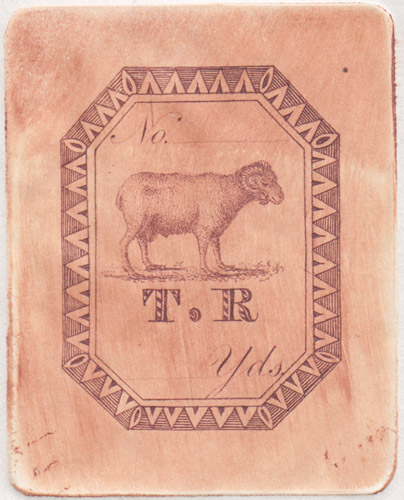
Pictured is an enlarged drawing of the seal of Thomas Rotch, copied from a sealing wax impression at Spring Hill. The fish is the roach, and is further proof of the pronunciation of the name. In the collection of Rotch-Wales papers the name is spelled “Roach,” “Roache,” “Roatch,” and “Roche” and later changed to Rotch. The name was always pronounced Roach in Massillon until the Charity School of Kendal land was sold and the allotment developed in 1926. Today, in New Bedford and Nantucket, Massachusetts, where the family was prominent in all business connected with whaling, the name is Roach.